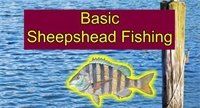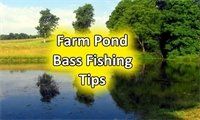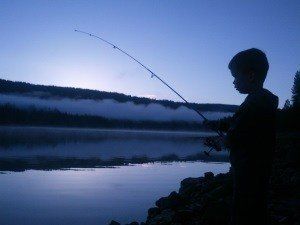FISHING
Featured Posts
Redneck Know How Blog
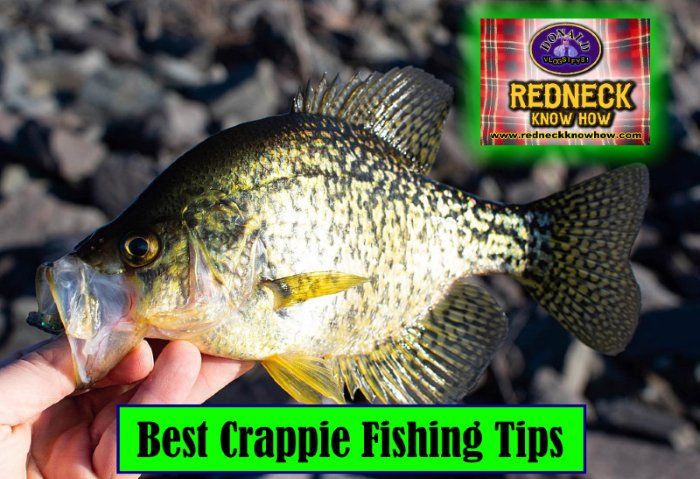
Every fisherman has his or her own favorite techniques to catch this beloved fish. Why is crappie, (or pomoxis, if you want to get scientific), are so beloved? Well, they give one heck of a fight when caught. A 2 lb. crappie can put up a fight to rival a bass of larger size. So catching them is fun. There is also the taste factor. Fried crappie tastes great.
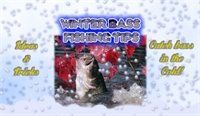
That nip in the air doesn’t mean you have to put up all your fishing gear and give up on catching a winter bass. All cold water means is you have to change your fishing tactics to adjust to the changed habits of the largemouth bass. Here are a few tips for catching those winter fish. Bass are more lethargic during winter months, but they are far from being a creature that hibernates, so they must feed to live. And any fish that feeds can be caught with the right bait and the right combination of tactics for the lure. Lures with thin metal blades can work wonders on a trophy winter bass. Use them for ledge hopping, walking down points, and along channel edges. Try jiggling slab spoons right in the face of slow to strike fish.
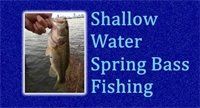
Pre-Spawn As the water temperature warms to the mid 50's as spring comes on, a lot of bass are still in the deep water. But a lot of the more aggressive fish are likely to be chasing bait in the shallows. When the bass hit the shallow water early like this, they are in search of warmer water and this means they have a higher metabolism. If the shallow water is clear, try suspending a finesse jig or jerkbait just over the bottom. Also try to wind a flat-sided crankbait around any cover that might be in the shallow water. It's best to use a shad colored crankbait until water temperatures reach 60 degrees, then switch to crankbaits that imitate crawfish. However, if the water is stained, spinnerbaits are a better option for open water, or for cover that is isolated. Use a jig for heavier cover. If the lake or pond has aquatic vegetation, try to concentrate on that first. Big bass love hydrilla because it draws in more bait fish due to it's oxygen producing properties. Hydrilla with the brightest green growth really seems to be an important factor in attracting bait fish and where there's bait fish, there's big bass. Look for rock cover as well. Rocks retain heat and aid in warming the water which attracts those bass with the high metabolism. Then try finding the wood cover during pre-spawn. As water temperatures warm into the 60's, largemouth bass hang in the shallows longer. This water temperature affect how the bass react to weather fronts coming in and out. As long as the shallow water stays in the mid to lower 60's, the largemouth bass will not move out of the shallow waters as they will in colder water temperatures. They will stay in the shallow water. A prime time to fish combinations of wood and grass cover is when bass move in seeking spawning areas and the water temperatures are in the 60's. Fish the grass first then wooden cover instead of rock covers. Don't neglect the rocks, but hit them only after the hydrilla patches and wood cover. You may find you'll be catching a lot of 2 to 3 pound male bass, but the larger females can be found around prime cover right outside of the spawning areas. So fish prime cover such as blowdowns or a dock that is near the spawning areas. If the water temperature is in the 60's but the bass in the shallow water don't seem to want to chase what you throw at them, try plastics. Otherwise, try a jerkbait in clear water or a spinnerbait if the water is stained. If the water is really stained bad you may want to try a spinnerbait with a Number 4 or number 5 Colorado blade so that you can get plenty of vibration. Spawn The full moon can have a big effect on the largemouth bass that are spawning as long as the weather is stable. But when weather is in consistent and sporadic, bass will spawn on the warming trend no matter what the phase the moon is in. So when the surface temp is in the upper 60's, the largemouth bass are spawning. A good bait to use during this time is Berkley Power Bait Power Hawg Bait 4-Inch. Try a black and blue combination when the water is dirty; grass or pumpkin green in clear water. The depth you fish should also depend on the clarity of the water. If the water is stained, bass will spawn in 4 feet or less. if the water is clear largemouth will spawn in water up to 8 feet. You should adjust your fishing as the water clarity changes. You can catch a large number of bass this time of year, but if you're out for the challenge of finding the hawgs you'll need to fish the edges of the spawning areas along the prime cover. the smaller bass will be scattered along the bank and in the various cover. But the big bass will be in heavier, darker cover and closer to the deep water. Smaller fish are just not a picky about the cover they use, but the big bass are much more choosy. For the big female bass that get into the heavy cover, your best bet is a flippin' stick. From time to time a spinnerbait or crankbait will bring a short strike from a spawning bass. If you do get a short strike on one of these baits, follow up immediately with a soft plastic lure. Post-Spawn After the spawn comes the post spawn and the beginning of topwater season. Topwater lures are effective during this time because male bass are protecting fry and the topwater lures are offensive to these male bass. And the big females who have finished spawning are still lurking in the shallow water and respond well to large top water lures. During this time, big lures catch big fish. Buzzbaits and stickbaits such as the Zara Spook work well during this phase. Floating jerkbaits, large double willow-leaf spinnerbaits, and full size jigs work well to catch big bass during this period also. Soon after the largemouth bass have spawned, many will return to the deeper water. But several fish will stick in the shallow water as long as there is abundant shade. Use your flippin' stick and a jig around thick trees and along and under docks. Try flipping in the thickest and nastiest stuff that other anglers won't touch. Get that jig as far back in the nastiest stuff as you can and you might be surprised at the big bass you catch.
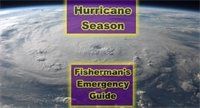
They are called Hurricane here in the United States. The strongest of the circulating storms, also called cyclones or typhoons in the western Pacific. Hurricanes in the Atlantic Ocean usually begin to form in the southern Atlantic off the coast of Africa, usually during Hurricane season, which runs from June 1st. through November 30th.
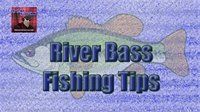
Most bass anglers are very comfortable fishing lakes and ponds with their relatively still waters. But many of these anglers have problems fishing in current. Ask them to fish for bass on a river such as the cape fear, and you can watch their bottom jaw drop to the ground and their face take on a confused, slightly scared look. There is a solution to this nightmare of many a bass angler. Learn where the lunker bass hang out in the fast moving water of rivers, streams, and creeks. Here are a few places to try if you dare to take on the river bass challenge, and go fishing for some lunker bass in the current of moving water. There are places where chunk rocks have been placed to prevent erosion from the current and differing water levels. Many of these places can be found on the Cape Fear. Look for them around bridges and damns. The current will push large river bass against these places. You can often find a largemouth or smallmouth bass as well as white bass and strippers being pushed close into the chunk rocks. Fish these rip-raps on days that the water levels are high and the current is strong. Try fishing rip-raps with a spinnerbait, a jig-n-pig, or a crankbait. Cast upstream into any pockets you see along the bank, and retrieve with the current. Switchbacks are a good place to try for large river bass. The water's current hits a bank and splits, causing the water to reverse direction. Monster bass can often be found in switchbacks. Baitfish will hang in switchbacks, which naturally attracts hungry lunker river bass. Target the seam along the edge of the divided currents, where they split direction. The current is drastically reduced in these spots, providing an excellent rest spot for baitfish, which of course brings in the bass, largemouth and smallmouth alike.
Moon Phase Know How
Moon Phase Know How
Anglers and hunters with know how, know the moon phases affect the success of their hunting or fishing trip.
Some of my fondest memories as a child is fishing with my family. I had a old Zebco 33 rod and reel combo in my hands and was fishing in old farm ponds before I could walk good. My parents made sure to teach me to know how to fish from an early age. Most people think of a father teaching his son to fish out on the bank of a pond, lake, or stream. Not so true in my case.
My mother had as much know how when it came to fishing as my father did. Perhaps even more, because she always seemed to out fish him. Could be he let us out fish him, he was just that kind of man. Then again, could be he had to spend more time untangling our fishing line than actually being able to catch a few bass, crappie, or bream himself.
My parents taught me how to fish with live bait for the most part. My father would cast and work a crankbait, topwater plug, or some other fishing lure to try and catch a largemouth bass or smallmouth bass from time to time. It wasn’t long before I had a fishing lure on my line chasing after those big largemouth bass too.
Over the years since, I’ve spent a good deal of time on the banks of ponds, lakes, and streams chasing largemouth and smallmouth bass as well as crappie, bream, and catfish. I’ve never been big on catfish, though they are a fun fish to catch. I’ve learned a lot and do know how to fish.
I’m certainly no professional angler. You won’t find me in a fancy bass boat chasing a purse and a wooden plaque. I’m just a redneck with a few fishing lures, hooks and a little fishing know how. A lot of my fishing techniques were taught to me by my parents. A lot was learned through trial and error fishing. I hope to pass some of the fishing know how I have on to you and help you be more successful at fishing. So if its largemouth bass, smallmouth bass, crappie, bream, spot, croaker or any other species I’ve gained a little fishing know how about; my hope is that my fishing articles help you become a better angler.

